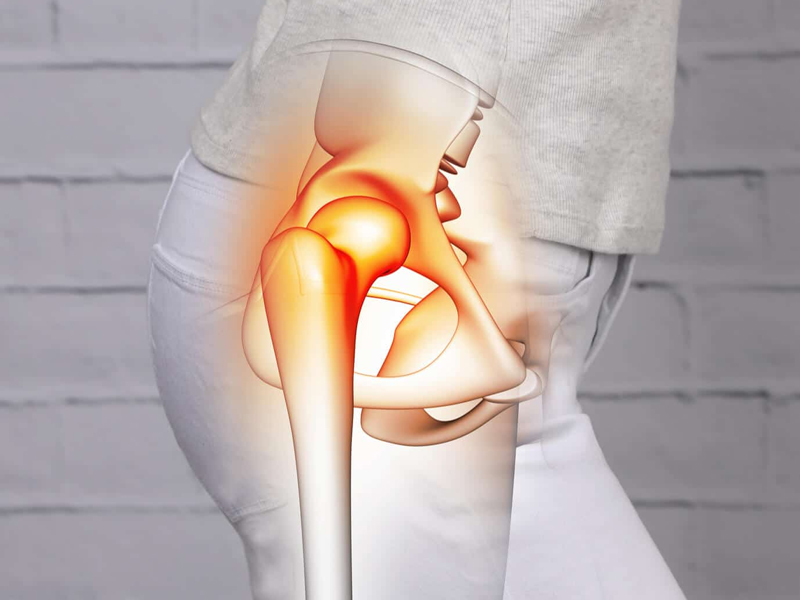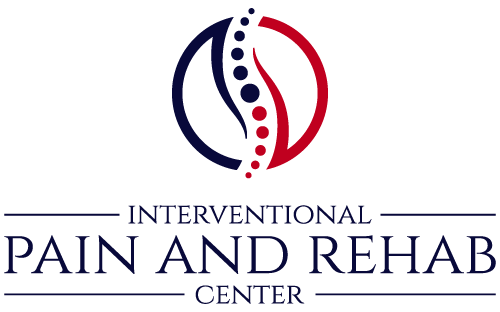Hip Pain
Appointment
Fill Out The Form Below
Working Hour
- 8 AM - 5 PM
- 8 AM - 5 PM
- 8 AM - 5 PM
- 8 AM - 5 PM
- 8 AM - 5 PM
- Closed
- Closed

Hip Pain
Aches in the upper leg, groin, buttocks, side of the hip, and occasionally even the lower back can be classified as “hip” pain. Your leg may move forward, backward, and to both sides thanks to the way your hip joint functions as a ball and socket. Additionally, the hip rotates inward and outward, enabling leg rotation.
The following bones are connected to your hip:
- Femur: the top of the thigh bone, which houses the hip joint’s “ball.”
- The acetabulum, which consists of the three pelvic bones, is the “socket” portion of the hip joint.
- Sacrum: the base of the lumbar spine, or the rear of your pelvis
Numerous muscles about the hip via tendons, enabling the joint to provide leg movement. These movements and muscles include:
- Hip flexion
- Hip extension
- Hip abduction (sideways movement of leg)
- Hip rotation
Numerous additional structures must support the hip’s broad range of motion. Sturdy connective tissue gives the joint flexibility and stability. The area’s blood vessels guarantee that there is always enough blood available for movement. The impulses sent by nerves enable the movement you want to happen. At the top, outer tip of the femur is a small fluid sac known as a bursa, which acts as a cushion and shields the joint, tendons, and ligaments from strain or injury.
Because your hip is made up of so many intricate parts that work together to maintain normal function, injuries can happen in a variety of ways. You can feel discomfort if any of these structures break down or become damaged.
Typical Reasons for Hip Pain
Hip pain can have a wide range of underlying causes, both acute and chronic. In order to guarantee that you receive the best possible therapy for your ailment, a correct diagnosis is essential.
One-Time Accidents
There’s a chance that the damage you’re experiencing is related to a single incident. Among them are:
- Fractures: An abrupt force to the femur or pelvis may result in a break at the joint. This most frequently happens in major falls and auto accidents. Patients who are elderly are particularly vulnerable to hip fractures from falls.
- Dislocations: When the femur is forced out of its socket, the result is a dislocated hip. Serious falls and car accidents also result in this injury. It may dislocate forward or backward, causing injury to the nearby muscles and ligaments.
- Sprains and strains: A sprain is caused by stretched or torn muscles or ligaments. These injuries happen when your muscles and ligaments are overworked, which happens frequently when lifting large objects, playing sports, or experiencing the previously mentioned dislocation.

Wear and Tear Damage
Your hip may experience considerable wear and tear from repetitive actions. These can be quite painful injuries that frequently result from sports or work conditions. Typical instances of injuries caused by repetitive movements include:
- Bursitis: As a result of repeated motions, the bursa that cushions your hip may fill with fluid and swell, resulting in redness and discomfort. Trauma to the hip joint may potentially injure it. At the outside of the leg-hip junction, this hurts.
- Tendonitis: Excessive use of your hip tendons can lead to injury and excruciating tendon inflammation. The most prevalent is hip flexor tendonitis, which is painful when the leg is extended or flexed and is frequently observed in runners.
- Cartilage injury: The labrum is most frequently affected by cartilage damage in the hip. By serving as a cushion, this cartilage permits easy mobility between the femur and the acetabulum. This may result in hip and groin pain.
Nerve Injuries
It is rare for the hip to sustain nerve damage, however low back nerve compression can cause hip pain:
- Nerve Pain: Nerve compression is typically the root cause of this problem. The condition is frequently accompanied with burning, tingling, or numbness down the buttock, which may also spread to the foot and leg. In extreme circumstances, leg weakness could occur.
- Piriformis Syndrome: This condition is linked to a congenital anatomical defect in which the sciatic nerve passes through rather than behind the piriformis muscle fibers. This may aggravate the nerve, resulting in discomfort in the hips, buttocks, and even down the affected leg. Hip and buttock pain may result from a piriformis muscle spasm.
Arthritic
Hip joint inflammation can lead to the development of arthritis, which worsens pain and stiffness with time. Hip arthritis most frequently manifests as one of the following types:
- Rheumatoid arthritis: This painful and swollen condition is brought on by your immune system attacking your hip joint.
- Osteoarthritis: This condition occurs when your hip’s cartilage degrades and the bones start to rub against one another. Pain and stiffness are the effects of osteoarthritis.
Hip Pain Treatment
Whenever feasible, we at the Denver Spine and Pain Institute advise conservative therapy. The course of treatment for your hip pain may vary depending on its particular cause.
- Physical therapy: The objectives of physical therapy are to reduce pain, increase mobility, and treat any musculoskeletal or mechanical issues that might be causing your hip pain.
- Medication: You may find it simpler to engage in physical therapy if you use muscle relaxants and anti-inflammatory drugs to temporarily relieve your symptoms.
- Injections: Injections may offer longer-lasting symptom relief if medication and physical therapy are insufficient to relieve your symptoms. Using imaging guidance, our doctors will try to determine the most likely source of discomfort and inject medication into that location.
- Platelet rich plasma (PRP) and stem cell therapies are examples of regenerative medicine therapy.
Surgery can be required if these conservative measures are insufficient to relieve the patient’s symptoms. Before your surgical consultation, our staff will conduct all necessary diagnostic testing to pinpoint the exact source and location of your discomfort. Your surgeon will be able to arrange your procedure with the help of these diagnostic tests.
Regaining a Life Free of Pain
Persistent hip pain can seriously lower your quality of life by making it difficult to carry out your favorite activities and regular daily duties. Thankfully, this agony is no longer something you have to endure. We provide the most cutting-edge therapies at the Denver Spine and discomfort Institute to relieve your elbow discomfort and get you back to enjoying life.
- A comprehensive range of services, including doctors, physical therapy, massage, counseling on diet and lifestyle, behavioral health, research, and state-of-the-art treatment alternatives
- Forming healing and caring connections that cater to your individual needs
- Talking through your options and giving you the direction you require from a committed healthcare partner
- Assembling a knowledgeable group to manage your care program
